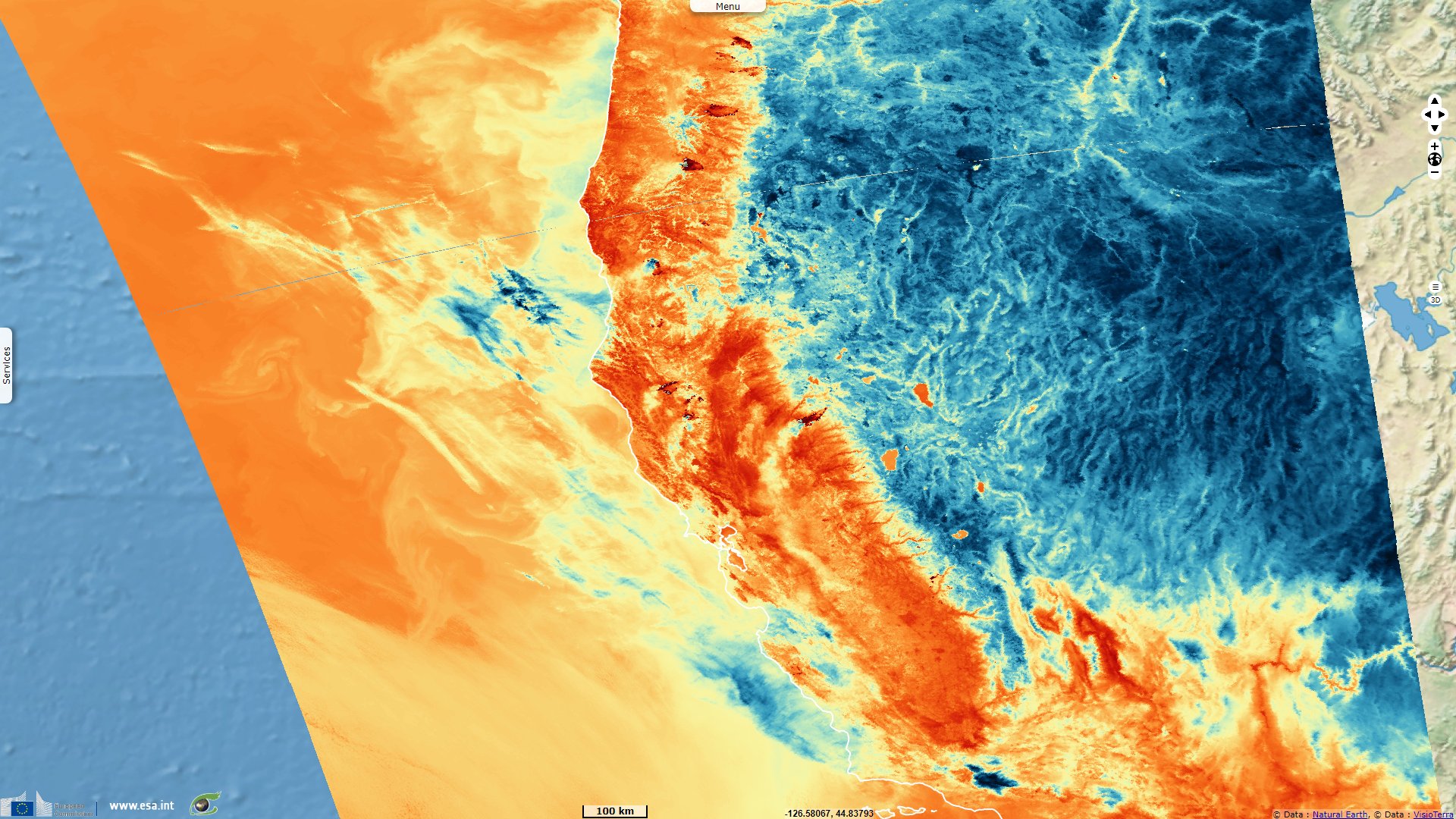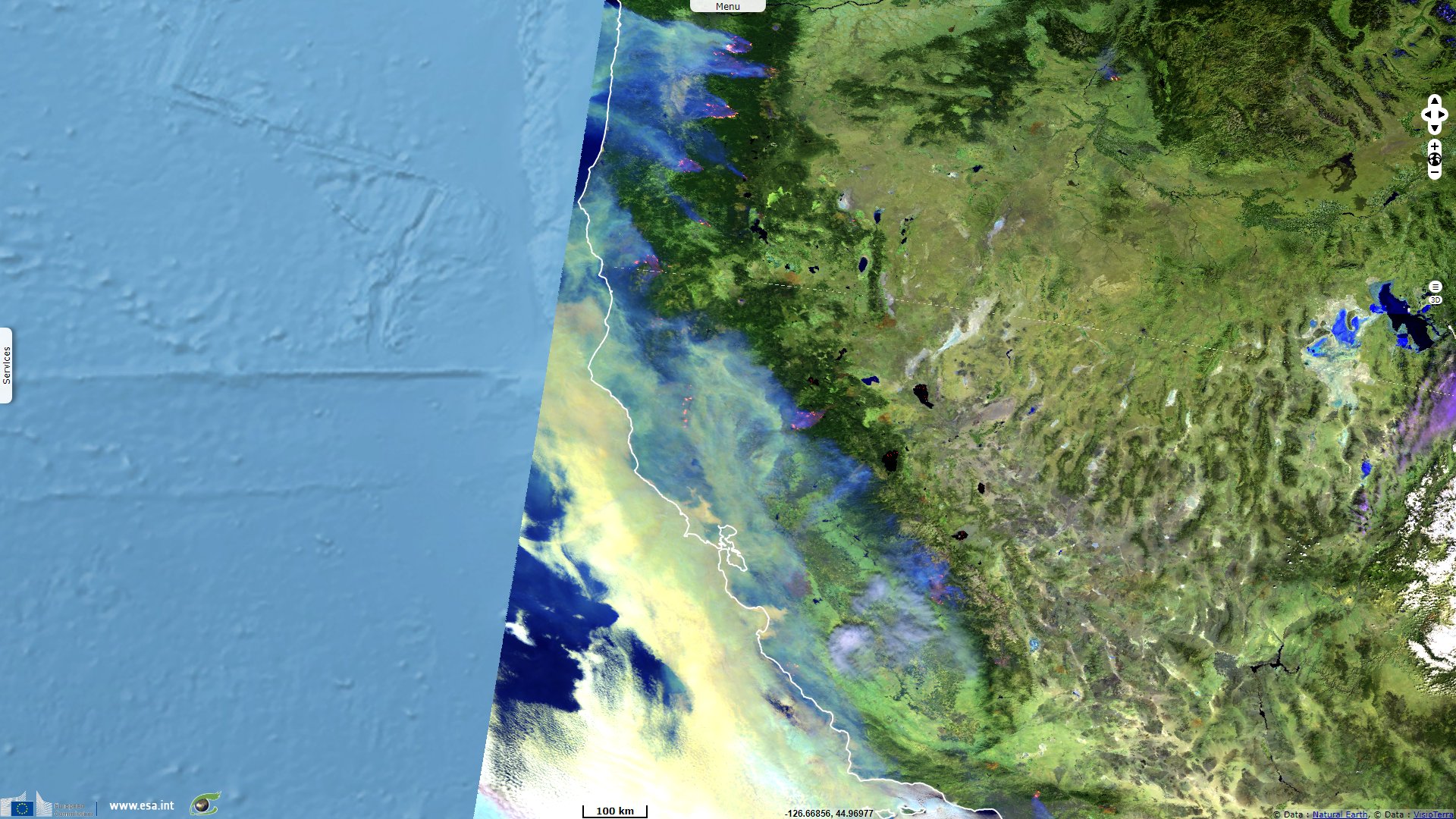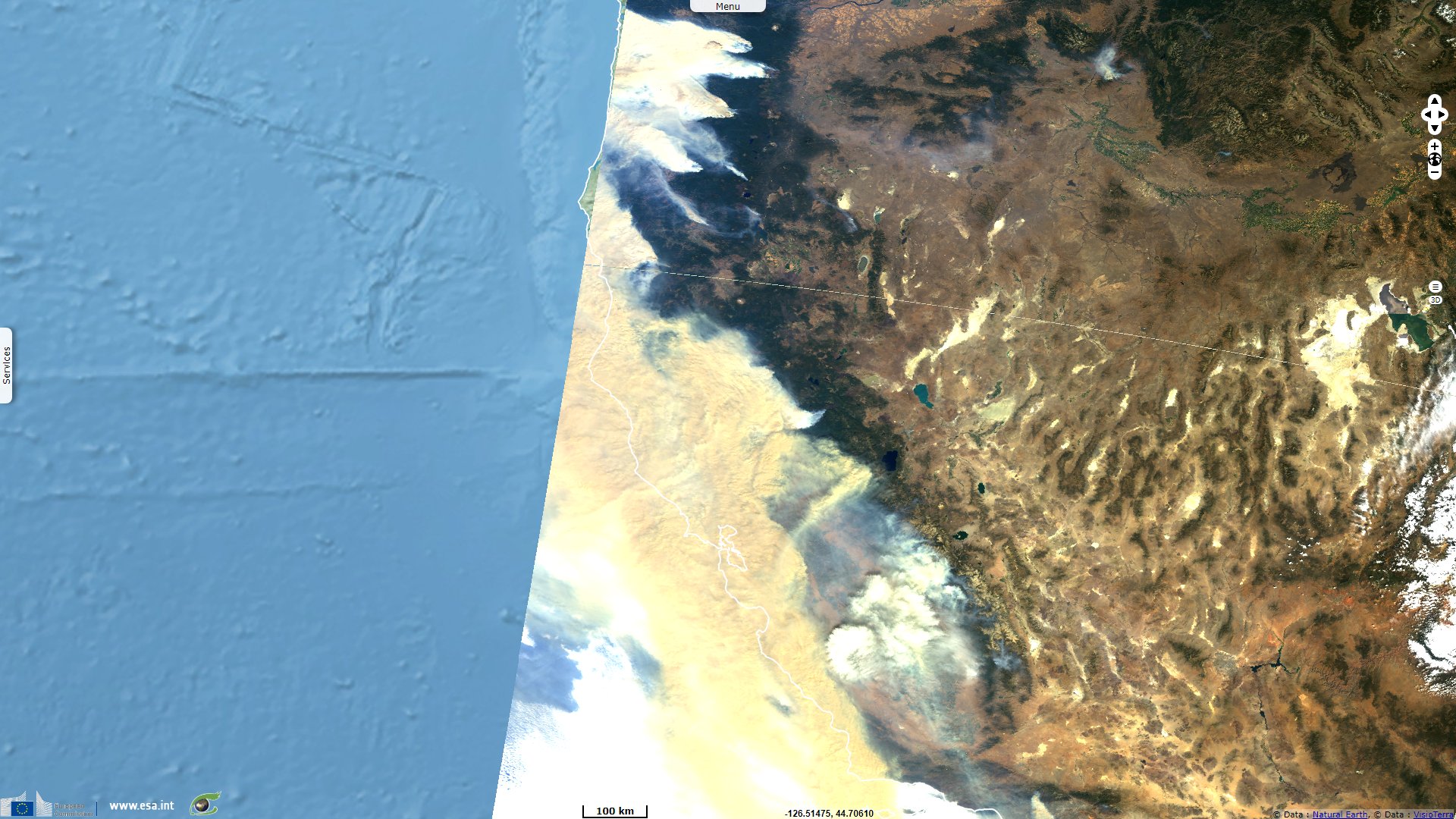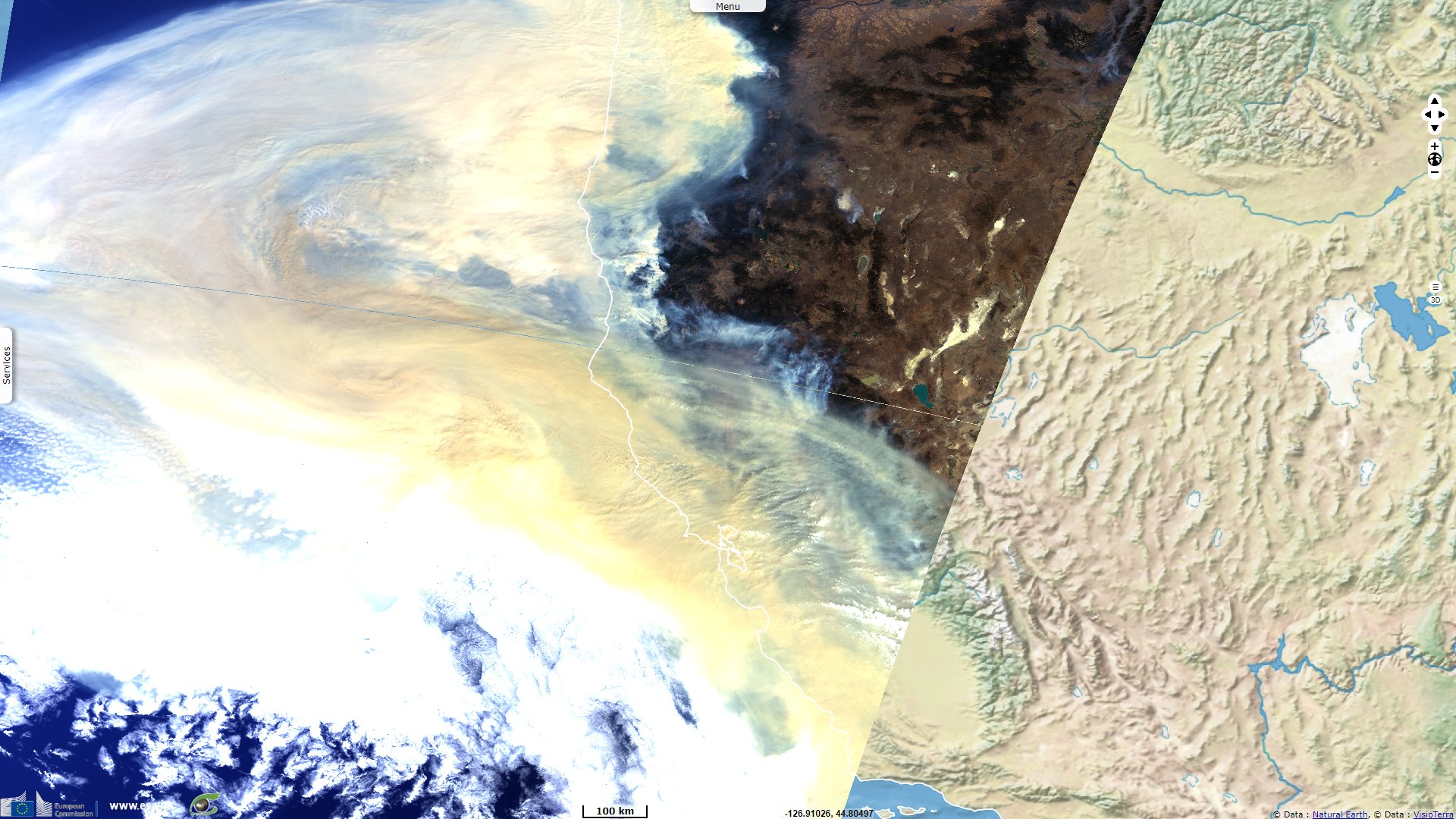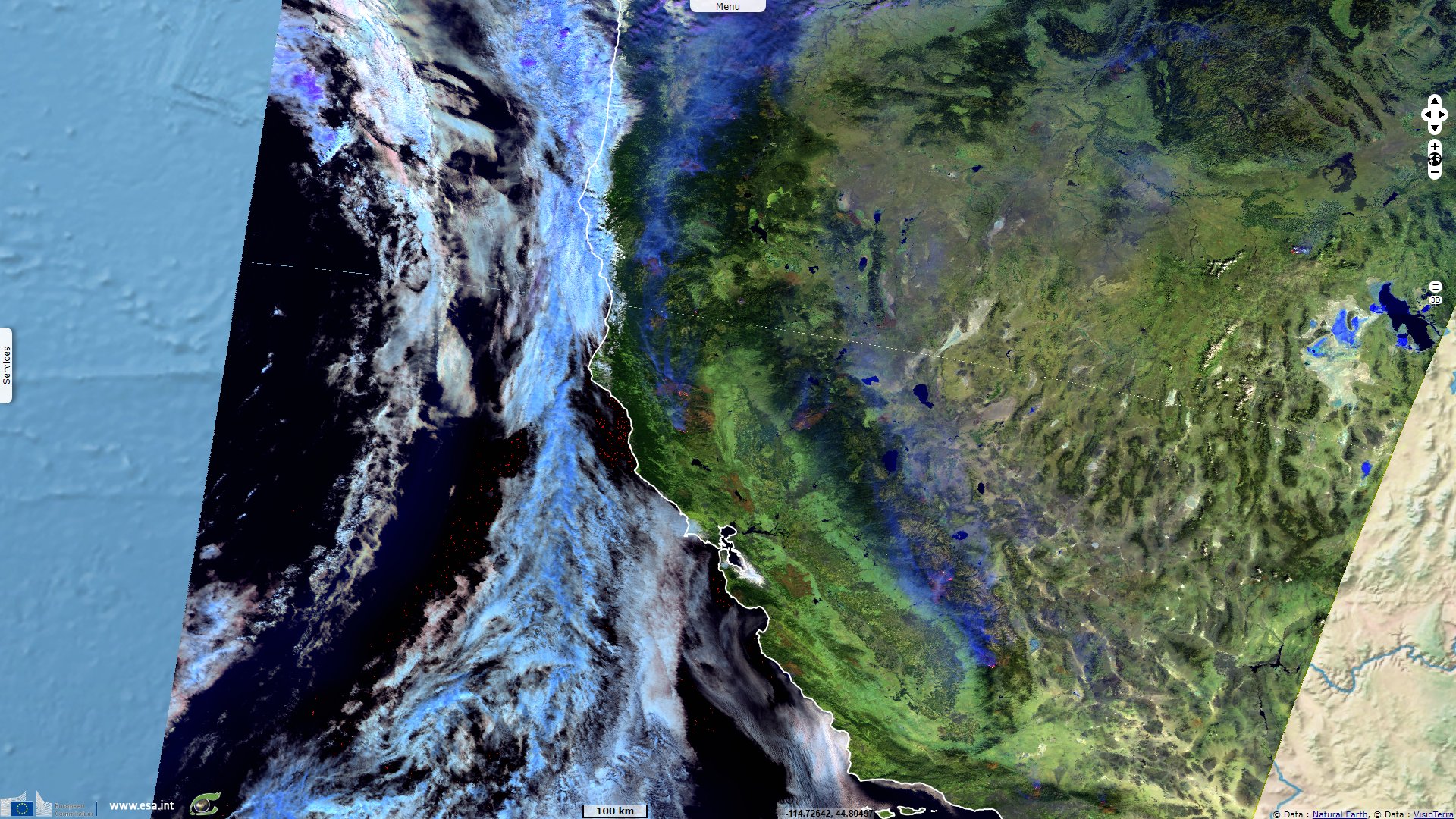Thick wildfire smoke turns the Californian sky orange
Sentinel-5P TROPOMI CO & AER_AI acquired on 08 September 2020 at 20:29:03 & 22:09:04 UTC
Sentinel-3 OLCI FR acquired on 09 September 2020 from 18:00:36 to 18:03:36 UTC
Sentinel-2 MSI acquired on 09 September 2020 at 18:59:29 UTC
...
Sentinel-3 SLSTR RBT acquired on 16 September 2020 from 06:05:25 to 06:08:25 UTC
Sentinel-3 OLCI FR acquired on 09 September 2020 from 18:00:36 to 18:03:36 UTC
Sentinel-2 MSI acquired on 09 September 2020 at 18:59:29 UTC
...
Sentinel-3 SLSTR RBT acquired on 16 September 2020 from 06:05:25 to 06:08:25 UTC
Keyword(s): Emergency, natural disaster, climate change, global warming, atmosphere, wildfire, forest, United States, USA
On 8 September 2020, CNN reported the wildfires that are devastating California had already burnt a record surface: "More than two dozen large wildfires raging across California after an extreme heat wave have created a 'dire situation,' said Thom Porter, chief of the Cal Fire. 'It is really one to behold. We have now, as of this morning, 25 major fires. We've had an additional, at least, two that have occurred just in the day today,' Porter told CNN's Wolf Blitzer. Cal Fire said earlier that more than [8900 km²] have been scorched across the Golden State so far this year, a state record. According to Porter, many of the fires will continue to grow and remain 'uncontrollable until we have a weather change.'" It has increased to 14 000 km² since.
"'We have fires burning in the north part of the state all the way down to the Mexican border, about [1300 km] between the furthest distant fires, so we're stretched across the landscape,' Porter said of his crews. The Creek Fire racing through the mountains of Central California is being fueled by dead trees and has grown to more than [580 km²] and destroyed an estimated 60 homes."
"California hasn't yet reached what is typically the heart of its fire season, when the notorious Santa Ana winds blow hot, dry air down from inland mountain ranges, adding fuel to an already dangerous recipe for fire. The frequency of fall days with extreme fire weather conditions in California has more than doubled since the 1980s, driven mainly by climate change, a recent study found."
The article published in CNN adds: "California's governor is pointing directly at climate change as the source of the extreme heat wave and a primary factor in the scores of wildfires plaguing California. This time last year, California saw 4927 fires that burned [480 km²], the governor said. In 2020, so far there have been 7606 blazes."
"Daniel Swain, a climate scientist at UCLA and the National Center for Atmospheric Research explained that due to human-caused climate change, temperature extremes are climbing higher and the vegetation is drier, which affects fire behavior.
'climate change has not just made the extreme heat waves that coincided with the fires worse. The bigger effect is the more subtle, long-term warming,' he said. 'That couple of degrees of (average) warming over decades ... you don't notice it as much, but it's still there lurking in the background, sucking extra moisture out of the vegetation and the soil.'
Swain doesn't expect conditions to improve soon for California and other Western states. He said they could be 'really extreme' for the next two months."
"The August Complex fire in remote national forests southeast of Eureka is officially the largest wildfire in modern California history — and it’s still growing with relatively low containment. The blaze, a cluster of several dozen merging fires that started during a thunderstorm in August, is among dozens of wildfires that have blanketed the state in recent weeks. With more than three months left in a record-setting fire season, California has now experienced three of the four largest wildfires its modern history."
The following day, the sky of California took a sinister dark orange colour due to the heavy smoke as Kari Paul described in The Guardian:
"People in the San Francisco Bay Area and across California awoke on Wednesday morning to an eerie scene of darkened, orange-hued skies and ash raining down as historic wildfires rage across the state. The apocalyptic skies are due to light being filtered through smoke from California’s worst fire season on record, according to a regional air pollution control organization the Bay Area Air District. 'These smoke particles scatter blue light and only allow yellow-orange-red light to reach the surface, causing skies to look orange,' the Bay Area Air District said on Twitter."
Cal Fire has gathered significant means to fight the numerous simultaneous fires: 16500 firefighters grouped in 328 fire crews, 2200+ fire engines, 104 assigned aircrafts, 314 bulldozers and 376 watertenders.
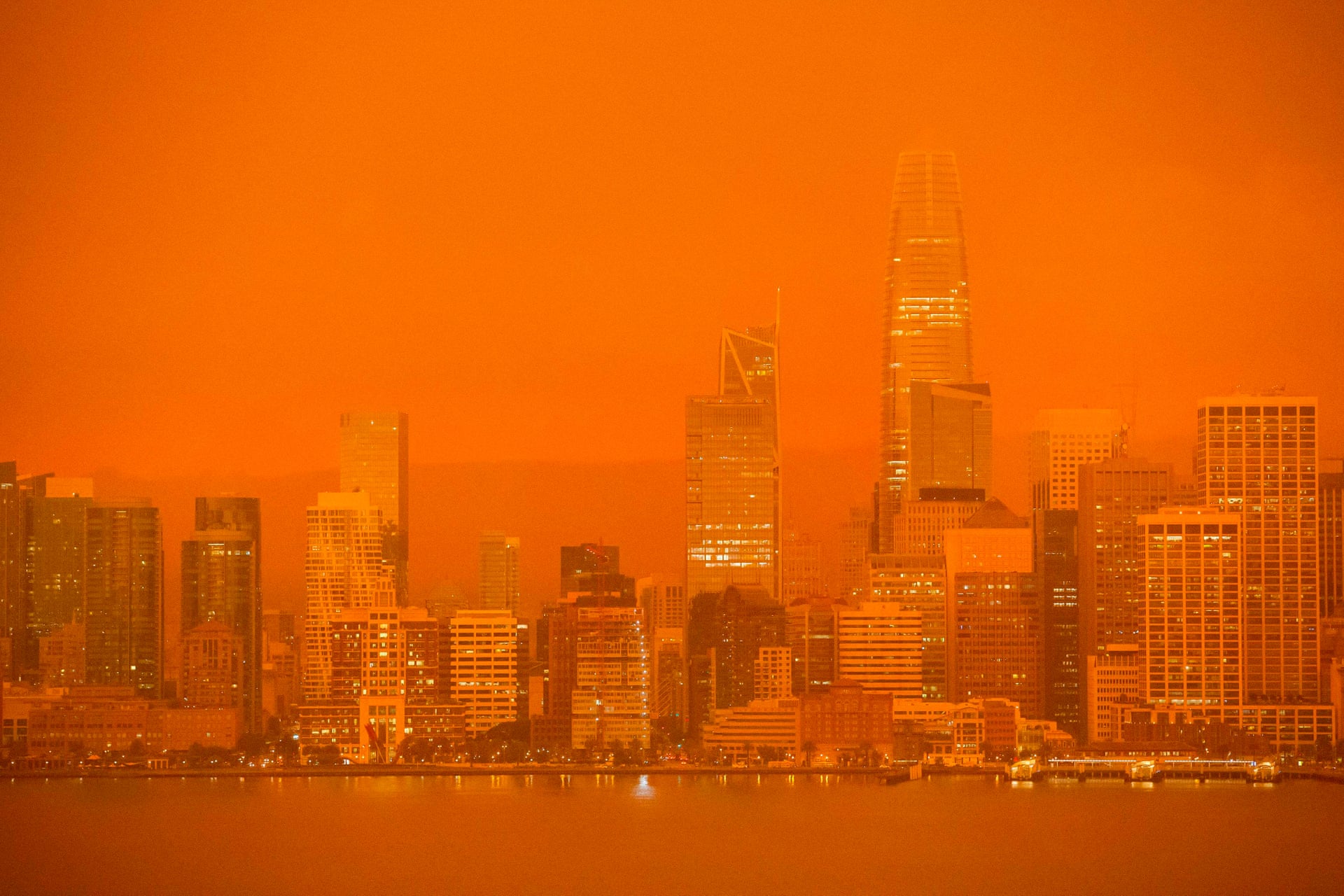



Left: "San Francisco’s skyline is obscured in dense orange smoke and haze as seen in this view from Treasure Island" - Right: "Cars drive along Ygnacio Valley Road as smoke fills the sky in Concord" - Source: Brittany Hosea-Small / Agence France Press / Getty Images.


Left: "Embers light up a hillside behind the Bidwell Bar Bridge as the Bear fire burns in Oroville" - Source: Noah Berger for Associated Press.
Right: "Extreme weather conditions has caused an increase in acreage for the #CreekFire, which has now grown to be the 16th largest wildfire in California history. 5 of the Top 20 largest wildfires in California History have occurred in 2020." - Source: Cal Fire.
